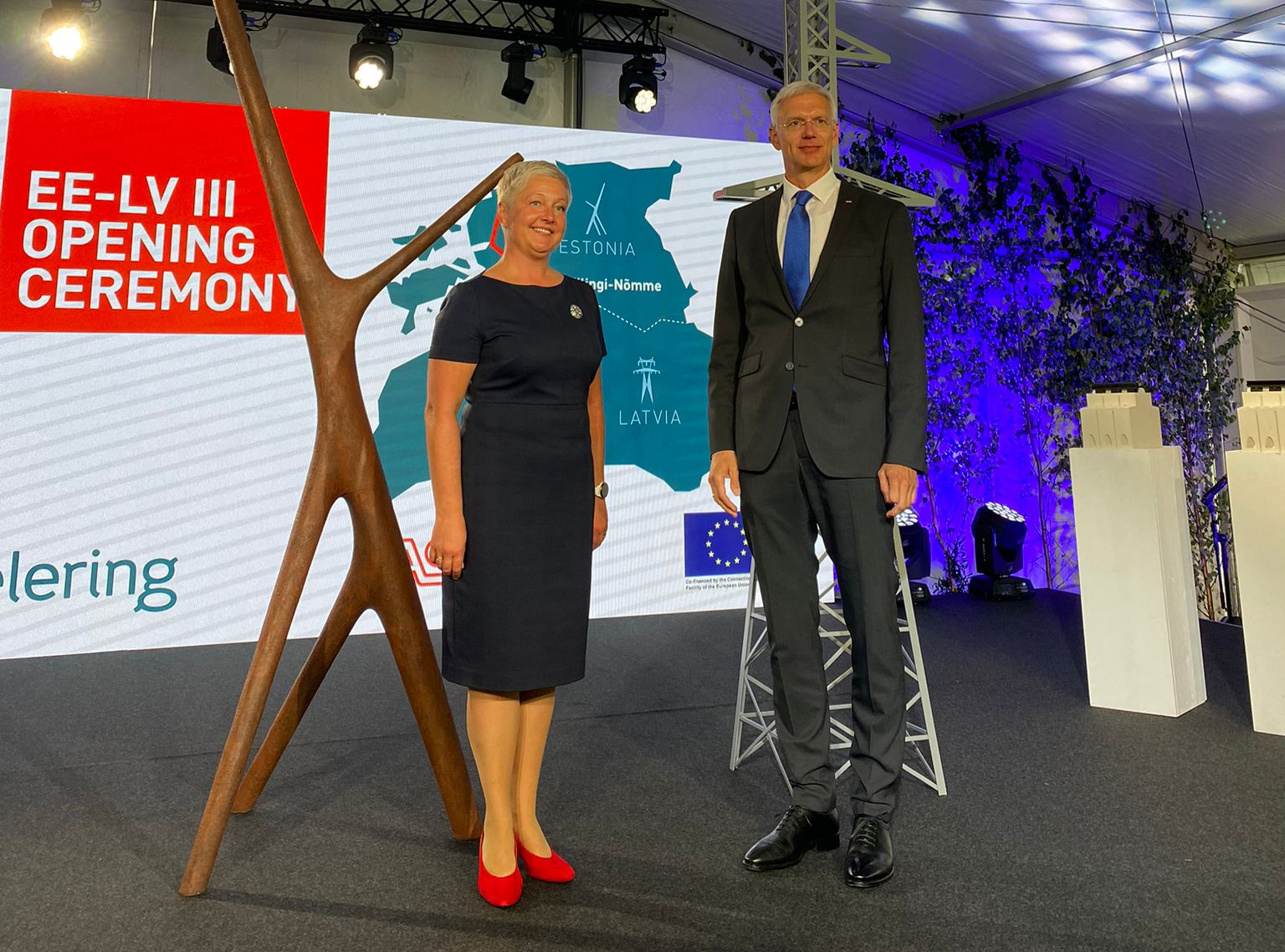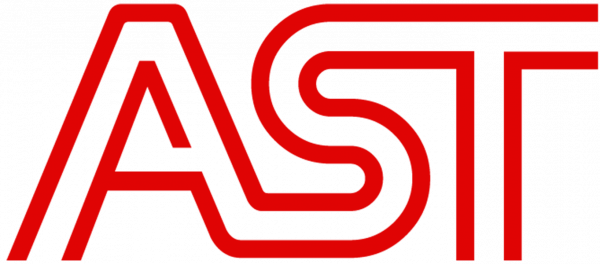New 330 kV electricity transmission line "Estonia-Latvia 3rd interconnection" solemnly inaugurated
 Today the Prime Ministers of Latvia and Estonia, Krišjānis Kariņš and Kaja Kallas, solemnly opened the 330 kV electricity transmission line "Estonia-Latvia 3rd Interconnection" built by the electricity transmission system operators of two countries' AS Augstsprieguma tīkls (AST) and Elering. The new interconnector has been in operation since the beginning of this year and has significantly improved security of electricity supply in both countries, increased cross-border electricity trading capacity and significantly strengthened the network in preparation for the Baltic States to disconnect from the power grids of Russia and Belarus in 2025.
Today the Prime Ministers of Latvia and Estonia, Krišjānis Kariņš and Kaja Kallas, solemnly opened the 330 kV electricity transmission line "Estonia-Latvia 3rd Interconnection" built by the electricity transmission system operators of two countries' AS Augstsprieguma tīkls (AST) and Elering. The new interconnector has been in operation since the beginning of this year and has significantly improved security of electricity supply in both countries, increased cross-border electricity trading capacity and significantly strengthened the network in preparation for the Baltic States to disconnect from the power grids of Russia and Belarus in 2025.
"3d interconnection is symbolic as it is eliminating one of the last bottlenecks on Latvia – Estonia border, strengthening electric grid between both countries. It means complete integration of three Baltic countries into unified electricity market", K. Kariņš said at the opening ceremony.
"The new mainline between Estonia and Latvia significantly improves transmission capacity and provides a more effective electricity market. Free movement of goods and services in the European Union is one of its main conditions. The commissioning of this interconnection - removes the technical restrictions of electricity flows. I really believe that the successful operation of this interconnection and continued common work of AST and Elering experts to provide it will be a sufficient basis for new renewable energy power plants in Latvia and Estonia. With this, we will be able to achieve the European green energy goals," at the opening ceremony of the new connection said Gunta Jēkabsone, Chairman of the Board of AST.
Within the framework of the project, a 330 kV high-voltage electricity transmission line from Riga CHP-2 to the Estonian border in the length of 176 kilometers was built in Latvia: a new power transmission line approximately 28 km from the Estonian border to the existing power line corridor in Rūjiena-Aloja, further along the existing 110 kV line corridor along towns of Aloja, Limbaži and Skulte to Saulkrasti. Further, along the route the line is located next to the planned Rail Baltica railway. The framework of the project also covered the expansion of the Riga CHP-2 substation, while the Estonian transmission system operator Elering built part of this line in Estonia from the border up to the 330 kV substation Kilingi-Nōmme, and a new 330 kV electricity transmission line Harku-Sindi was built for ensuring safe interconnection operation.
In total, the costs of the 3rd interconnection project for the 330 kV line between the substations Riga CHP-2 in Latvia and Kilingi-Nomme in Estonia and for the Estonian internal 330 kV line Harku-Sindi are 170 million. EUR, of which 112 million EUR is the co-financing from the European Union's Connecting Europe Facility (CEF). In Latvia 79 million EUR have been invested in the construction of the project, 65% of which are co-financed from the CEF funds
The new line will increase the current Estonian-Latvian cross-section transmission capacity by at least 600 MW. Until now, the capacity of existing interconnection was not sufficient to ensure the required volume of electricity trade between Latvia and Estonia, which resulted in congestion and electricity price differentials at certain hours. It is planned to eliminate the transmission capacity deficit in the Estonian-Latvian cross-section by 2024, when the reconstruction of the existing Valmiera-Tartu and Valmiera-Tsirguliina electricity transmission lines will be completed. The project "The third 330 kV interconnection between Estonia and Latvia" is also important for the security of electricity supply and stable operation of the electricity transmission network both in Latvia and in the Baltics as a whole.
The design and construction works of the electricity transmission line were performed by the general partnership "EE-LV Interconnection", consisting of "Elko" Ltd from Latvia, Polish JSC "SELPOL" and Estonian JSC "LEONHARD WEISS ENERGY", while the civil works at substation of Riga CHP-2 were performed by "Empower AS branch in Latvia".
Work on the new electricity transmission line project was started in 2012 with an application to the State Environmental Monitoring Bureau, and in 2014 an environmental impact assessment was launched and public consultations on the project took place. Based on a joint application from AST and Elering, in October 2014 the project received 65% co-financing from the Connecting Europe Facility (CEF). In 2016, a tender was announced for design and construction works, and the Cabinet of Ministers, considering the importance of the project, granted the project the status of an object of national interest. The construction project of the new line was started in the beginning of 2018 by signing a design and construction contract, the first pylon was raised in May 2019, the construction of the line was completed in December 2020, and it was put into operation in March this year.

